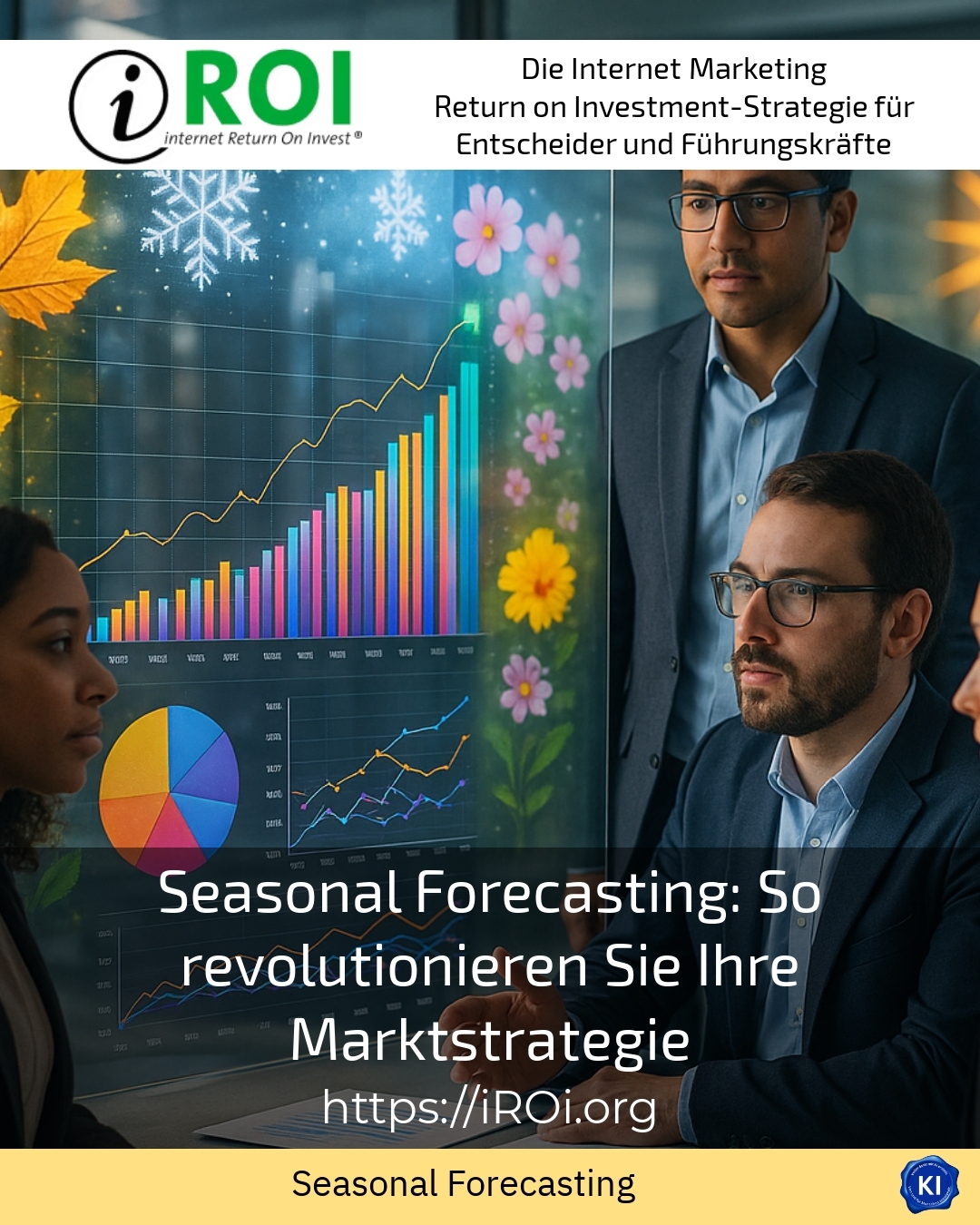Introduction to Seasonal Forecasting
Seasonal forecasting helps companies to recognise seasonal fluctuations and patterns in their market environment at an early stage. The aim is to manage planning and resources in such a way that business is focussed in the right direction at the right time. Particularly in industries with strong seasonal influences, forward-looking analyses can provide valuable impetus for marketing and sales. Clients from the retail, financial services and consumer goods sectors frequently report that a well-founded seasonal forecast forms the basis for an effective market strategy.
The importance of seasonal forecasting for your market strategy
Seasonal forecasting offers the advantage of recognising recurring demand cycles and developing appropriate measures. For example, retail sales of winter clothing increase rapidly in autumn, while garden furniture booms in summer. Precise forecasts allow stock levels to be reduced and marketing campaigns to be managed with pinpoint accuracy.
In the financial sector, traders observe seasonal effects, such as the so-called „Halloween strategy“, which utilises seasonal stock market cycles. For example, investments are often increased between October and April in order to benefit from historically better market phases. Commodities such as gold also show seasonal patterns, which makes trading easier and reduces risks.
Another example is the food industry, where strawberries, for example, become more expensive on certain festive days, which in turn influences purchasing behaviour. The analysis of such factors is part of seasonal forecasting and helps to optimise pricing strategies and promotions.
Practical examples from everyday life in the industry
In the fashion trade, companies usually plan their collections and advertising campaigns precisely in line with seasonal demand. For example, a sporting goods manufacturer specifically advertises outdoor and running shoes in spring because customers are more active at this time of year.
In the food sector, retailers rely on seasonal forecasting to take account of local festivals or public holidays, for example. For example, a supermarket significantly increases its range of chocolate products around Easter to cover peaks in demand.
Seasonal patterns can also be utilised in the event industry. Concert organisers and festivals plan well in advance in order to maximise demand during the summer season.
BEST PRACTICE with one customer (name hidden due to NDA contract) the marketing team was able to precisely adjust stock levels for winter sports articles by implementing seasonal forecasting. This resulted in 15 % less excess stock and a 12 % increase in sales year-on-year.
How to revolutionise your market strategy with seasonal forecasting
To successfully implement seasonal forecasting, it is advisable to first carefully analyse historical data. Identifying patterns, such as recurring peaks or troughs in demand, is essential. Companies should take into account both macroeconomic and industry or product-specific factors.
The early planning of marketing campaigns for seasonal peaks is also crucial. One manufacturer of heating technology starts targeted advertising in late summer to reach customers before cold spells and boost sales.
Price strategies adapt to seasonal trends: Times of high demand are suitable for upward price adjustments, while discounts or special promotions are recommended in weaker phases to increase attractiveness. For example, a florist might offer special arrangements for Valentine's Day and structure targeted sales in the summer.
Technology also plays an important role. Modern tools use AI and machine learning to make predictions ever more accurate and enable dynamic adjustments. This simplifies tracking and rapid reactions to market changes.
BEST PRACTICE with one customer (name hidden due to NDA contract) the timing accuracy for seasonal campaigns was improved with the help of AI-supported seasonal forecasting. This enabled the company to increase the conversion rate by 18 % during the Christmas period.
Tips for practice
- Use data from previous years to identify seasonal patterns and define rough time periods.
- Segment your customer groups according to their purchasing behaviour throughout the year in order to develop targeted offers.
- Integrate seasonal aspects into your pricing strategy and also take external factors such as weather or public holidays into account.
- Plan marketing campaigns well in advance and remain flexible in order to react to new trends or market conditions.
My analysis
Seasonal forecasting brings clear benefits to companies by helping them to better understand the seasonality of their markets and act accordingly. Especially for products and services with pronounced seasonal fluctuations, the ability to precisely adjust demand and pricing is of great importance. With the right preparation, it is not only possible to increase sales, but also to reduce inventory costs and address customer needs in a more targeted manner.
iROI-Coaching provides you with professional support for seasonal forecasting projects. We support you in shaping your market strategy with a view to the future and benefit from best practices from various industries in order to achieve your business goals in the long term.
Further links from the text above:
Seasonal marketing - DESIGNBÜRO PERSCH
Your guide to a successful seasonal pricing strategy
Seasonal trading strategies: How to take advantage of market cycles
How you can use seasonal forecasts to boost your business growth ...
Definition of seasonality in the supply chain - Slimstock
Seasonal marketing: successful strategies for every time of year
Forecasting Definition ⇒ Strategic Forecasting - 4strat
Seasonal demand forecast - an expert's view - EazyStock
For more information and if you have any questions, please contact Contact us or read more blog posts on the topic internet Return on Investment - Marketing here.















